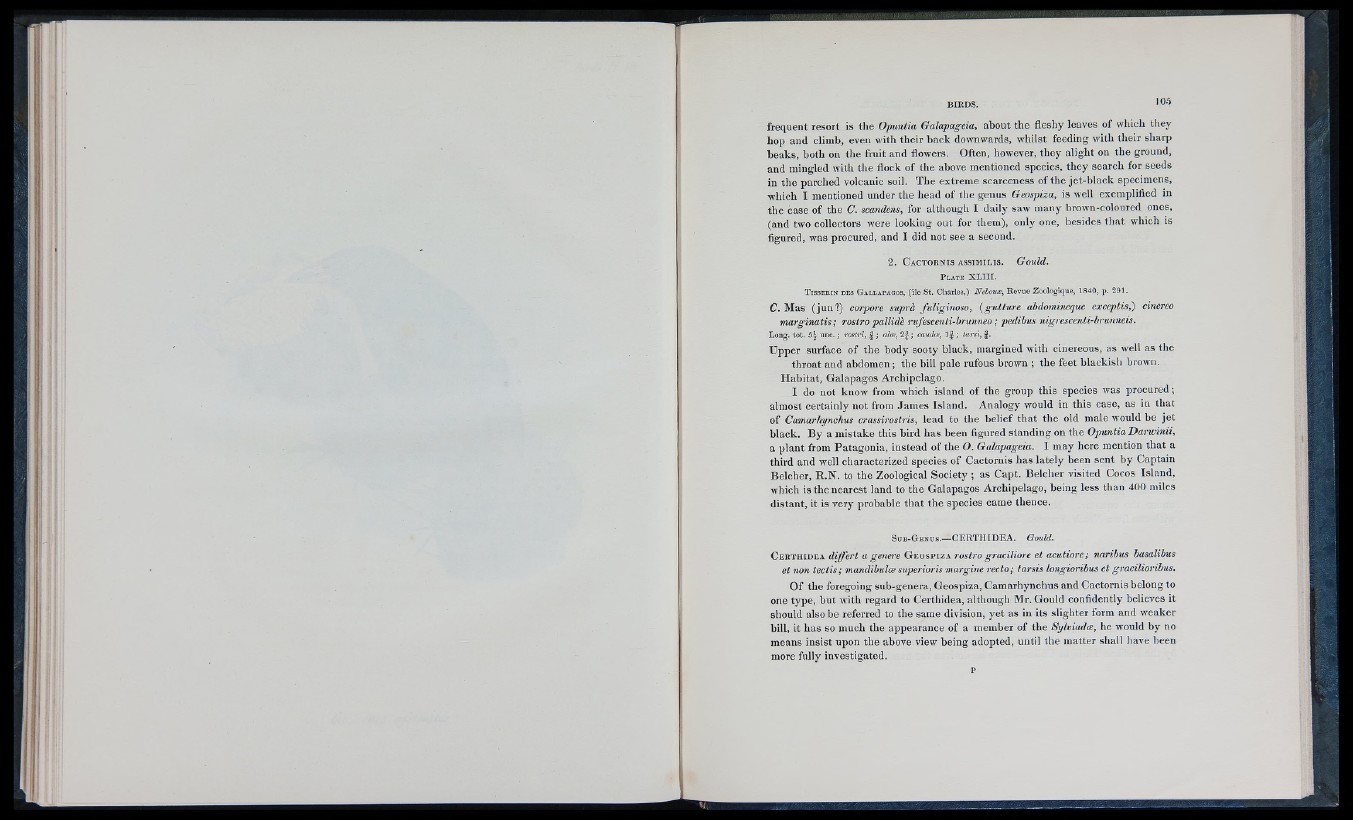
frequent resort is the Opuntia Galapageia, about the fleshy leaves of which they
hop and climb, even with their back downwards, whilst feeding with their sharp
beaks, both on the fruit and flowers. Often, however, they alight on the ground,
and mingled with the flock of the above mentioned species, they search for seeds
in the parched volcanic soil. The extreme scarceness of the jet-black specimens,
wliich I mentioned under the head of the genus Geospiza, is well exemplified in
the case of the C. scandens, for although I daily saw many brown-coloured ones,
(and two collectors were looking out for them), only one, besides that which is
figured, was procured, and I did not see a second.
2 . C a c t o r n i s a s s im i l i s . Gould.
P l a t e XLIII.
T is s e r in d e s G al la pa g o s , (île St. Charles,) Nehoux, Revue Zoologique, 1840, p. 291.
C. Mas (jun?) corpore suprà f uliginoso, {gutture abdomineque exceptis,) cinereo
marginatis; rostro pallidè rufescenti-brunneo; pedibus nigrescenti-brunneis.
Long. tot. 5-f unc. j rostri, | -, aloe, 2 | ; caudæ. I f ; tarsi, | .
Upper surface of the body sooty black, margined with cinereous, as well as the
throat and abdomen ; the bill pale rufous brown ; the feet blackish brown.
Habitat, Galapagos Archipelago.
I do not know from which island of the group this species was procured ;
almost certainly not from James Island. Analogy would in this case, as in that
of Camarhynchus crassirostris, lead to the belief that tlie old male would be jet
black. By a mistake this bird has been figured standing on the Opuntia Darwinii,
a plant from Patagonia, instead of the O. Galapageia. I may here mention that a
third and well characterized species of Cactornis has lately been sent by Captain
Belcher, R.N. to the Zoological Society ; as Capt. Belcher visited Cocos Island,
which is the nearest land to the Galapagos Archipelago, being less than 400 miles
distant, it is very probable that the species came thence.
S u b -G e n u s .— CERTHIDEA. Gould.
C e r t h i d e a dijf'ert a genere G e o s p i z a I'ostro graciliore et acutiore; naribus basalibus
et non tectis; mandibuloe superioris margine recto; tarsis longioribus et gracilioribus.
Of the foregoing sub-genera, Geospiza, Camarhynchus and Cactornis belong to
one type, but with regard to Certhidea, although Mr. Gould confidently believes it
should also he referred to the same division, yet as in its slighter form and weaker
bill, it has so much the appearance of a member of the Sylviadoe, he would by no
means insist upon the above view being adopted, until the matter shall have been
more fully investigated.